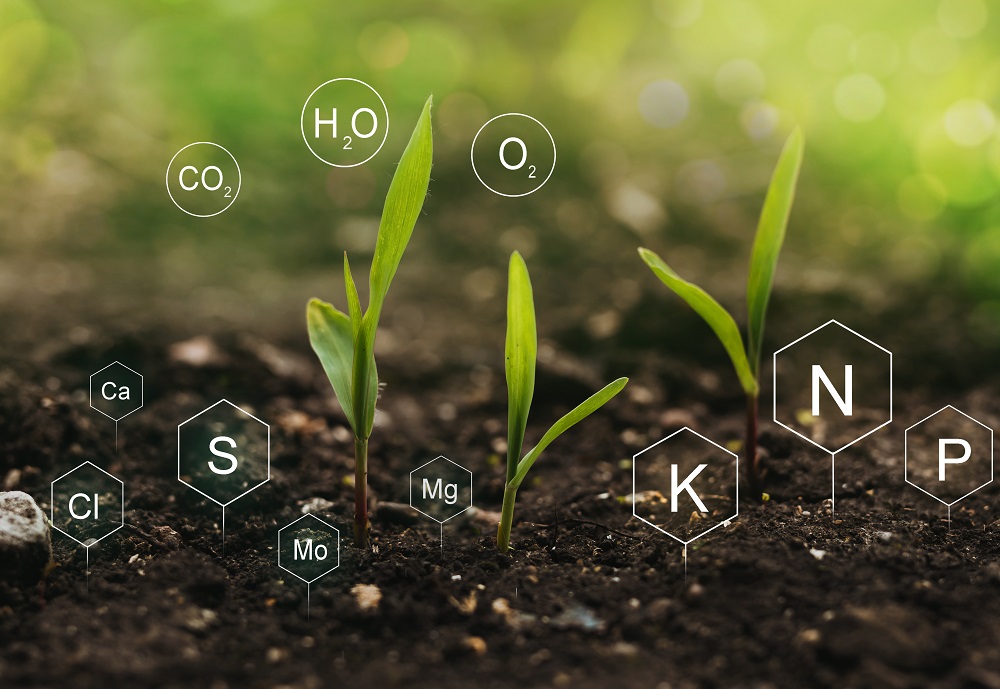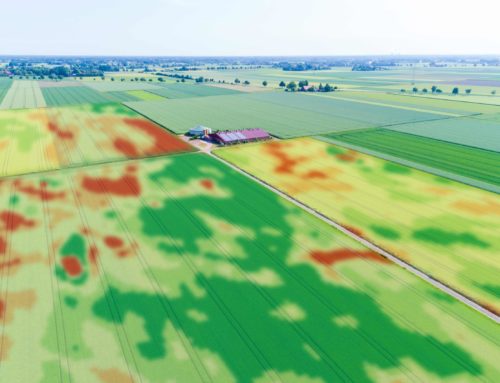Accurately adjusting soil nutrients
Fertilisation is one of the key methods of generating high-value harvests of a sufficient quality and quantity. Without a targeted supply of nutrients, the plants have no guaranteed source of food. To achieve this, soil nutrients must be replenished after being absorbed by the crop and transported away with the harvest. Fertilisation should meet the needs of the plants and ensure the long-term fertility of the soil, while also protecting the environment. Nutrients must therefore be applied in a way that enables them to be optimally utilised by agricultural crops, avoiding losses to bordering environmental zones and groundwater reserves.
In addition to organic and mineral fertilisers, auxiliary substances for plants and soils are also available as soil nutrients. The most important macronutrients for plants are nitrogen, potassium, calcium, magnesium, phosphorus and sulphur. Some plant species also need additional silicon and sodium, which is important for the growth of C4 plants such as maize, for example.
In Germany, farmers use the Fertiliser Application Ordinance as a basis for spreading soil nutrients. Information on several factors is needed in order to implement the requirements in a professional manner, most notably the target yield. The soil nutrients need to be adapted to the planned nutrient withdrawal by the crops. To assist with this, guide values can be used to determine the nutrient requirement at different growth stages. In addition to the planned fertilisation measures, the subsequent delivery potential indicated by the soil must also be taken into account. This information on soil nutrients can be obtained through soil testing. The tests indicate various levels of supply that can be used to generate a fertilisation recommendation. In the next chapter, we explain the characteristics that can be determined from the soil.
Key soil characteristics
Planning and carrying out fertilisation requires knowledge about the soil, its structure and nutrient availability, which in turn is impacted by the soil structure. As such, farmers need to obtain some fundamental knowledge on the soil’s characteristics before applying fertilisers.
The structure of the soil influences its heat and water balances, storage density, pore size, root penetrability and biological activity. Soil structure therefore has a direct impact on the available soil nutrients. The characteristics of the humus layer can be altered by the cultivation measures applied. Loose soil with good root penetrability, high levels of biological activity and a crumbly texture is beneficial for soil nutrients. It enables surface water to be easily absorbed and stored. Crumbly humus also enables better root penetration and aeration, which benefits both plants and soil life in equal measure. Poor humus can lead to waterlogging and nitrogen losses, and inhibit root growth and microbial activity.

The availability of soil nutrients depends on several factors. The quantity of nutrients is determined by the total quantity of a specific nutrient contained in the root-penetrated soil area. Only a small proportion of these nutrients are available to the plants in the short term. The concentration of a soil nutrient in the soil solution, also known as the intensity factor, is crucial for plant nutrition. The nutrient concentration provides a direct measure of the nutrients available to plants in the soil. In this context, it is worth noting that the relationship between nutrient and harmful elements is reciprocal. For example, if the concentration of calcium and potassium is too high, less magnesium can be absorbed as a consequence of the competition for ions. Similar problems emerge as a result of the competition between aluminium, iron, manganese and zinc, which has a negative impact of the absorption of calcium and magnesium in heavily acidic soils.
Therefore, farmers should aim to achieve a harmonious ratio of soil nutrients to optimise nutrient availability. The yield potential of a particular location can only be fully exploited when a balanced ratio and sufficient quantity of all the elements is present. The law of the minimum applies here. According to this law, one individual nutrient can restrict plant growth even when all the other nutrients are present in sufficient quantities.
The soil usually only contains a small proportion of the nutrients required for growth. The larger proportion is provided from reserves through mineralisation, desorption and dissolution processes. This context is described by the kinetic factor. The availability of soil nutrients to plants is influenced by the soil’s nutrient concentration, water balance and capacity to subsequently deliver nutrients. This context is described by the capacity factor. It forms the measure for the available reserve of soil nutrients.
The nutrient concentration in the soil is increased through fertilisation, i.e. the targeted supply of soil nutrients. Since arable land tends to exhibit localised differences, it is generally advisable to carry out fertilisation site-specifically. In precision farming, fertilisers can be spread based on requirements via application maps. The Crop View component by 365FarmNet, for example, utilises multi-year satellite data from the fields to identify different field sections.
The higher the soil’s water content, nutrient concentration and root penetration, the more nutrients are delivered and made available to the plants’ roots.
The ground water balance is a major determining factor for nutrient availability. A lack of water in the upper soil layers leads to conditions such as a low nutrient transport rate and restricted nutrient mineralisation due to a decrease in microbial activity. Excessive water, on the other hand, leads to poorer warming and aeration in the soil, and shallower root penetration. Too much water also has a negative effect on microorganisms. Compacted soil causes excess water in the humus layer. A loose, fine tilth is required in the soil to avoid waterlogging.
The pH level in the main root area also has a considerable impact. It indicates the level of acidity in the soil. The term “pH” is derived from the Latin “pondus hydrogenii” (weight of the hydrogen) and “potentia hydrogenii” (effectiveness of the hydrogen). As such, it expresses the concentration of hydrogen ions in the soil and their effectiveness. This refers to the relationship between acids and bases. The pH level of the soil is easy to regulate through fertilisation. Once the values have been determined via soil testing, application maps can also be used in this instance to balance out differences in the field sections in a targeted manner. The pH level is also highly dependent on the initial material from which the soil is formed. If the material contains a high level of carbonates, the soil usually indicates a slightly acidic to slightly alkaline soil reaction. In this case, the risk of soil acidification is quite low. Soils containing a high proportion of granite, gneiss or sandstone are much more at risk of acidification in areas with high rainfall. A lower pH level increases the solubility of phosphorus fertilisers, encourages the release of soil nutrients and improves the solubility and availability of most micronutrients. It does however also cause an accumulation of heavy metals such as cadmium and lead, and can lead to increased losses from leaching.
On the whole, soil acidification is a natural process caused by environmental factors. For this reason, regular monitoring is imperative. Soil sampling enables soil nutrients to be tested precisely and adjusted in a targeted manner. The test results can be integrated into a farm management information system (FMIS) and meaningfully evaluated for use as a decision-making basis for cultivation activities. Various expert apps are also available to help farmers digitalise their agricultural processes and make them more efficient.
press contact
Yasmin Moehring
Tel. +49 30 25 93 29–901
Mobil +49 151 17 28 18 69
moehring@365farmnet.com



